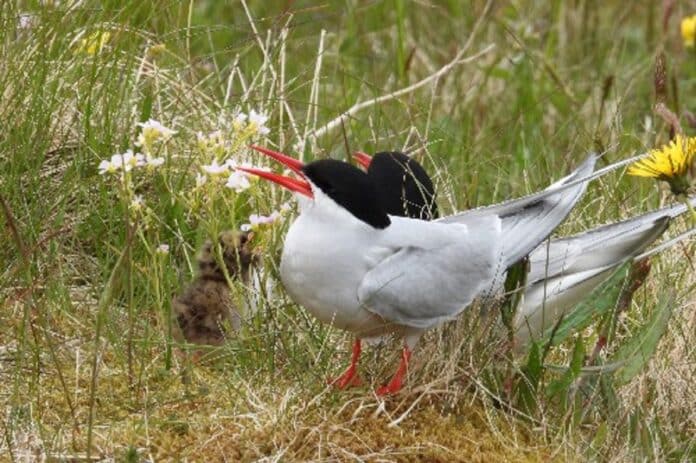Arctic terns, which have the world’s longest migrations, can overcome the threats posed by climate change. These birds nest north of the planet and migrate to Antarctica in the Southern Hemisphere for the summer.
A new study led by the University of Exeter and the Met Office, and involving the University of Bristol, looked at the anticipated effects of climate change on arctic terns outside of the mating season.
The new study indicated that the overall impacts of climate change on migrating terns should be low because they are expected to be resilient due to their ability to live across such large territories. However, the researchers caution that several minor effects may continue to impair this long-lived (up to 30 years) species and that other species may be unable to adapt to local and regional changes.
Co-author Isolde Glissenaar of Bristol’s School of Geographical Sciences said, “My role as a sea ice scientist in the group was to look at the changes in Antarctic sea ice change, as this is where the Arctic Terns stay during the southern hemisphere summer.
Multiple climate and Earth System Models were used in the study to forecast changes by 2100 based on observations of current climate change. The “middle-of-the-road” and “fossil-fueled development” emissions scenarios were the subjects of the study’s effects analysis.
The North Atlantic, a crucial feeding area for millions of seabirds and other marine species, was predicted to experience a drop in primary productivity due to the latter. Three other essential locations for Arctic terns, the Benguela Upwelling, the Subantarctic Indian Ocean, and the Southern Ocean, were predicted to experience minor changes to primary productivity.
Dr. Joanne Morten, from the University of Exeter, said, “Arctic terns rely on productive oceans for food, sea ice for rest and foraging, and prevailing winds during flight.”
The impact of the expected Antarctic sea ice decrease on tern migration is unknown. However, predictions indicate that slight changes in prevailing winds would have “minimal impacts” on tern migration, except in the Southern Ocean, where stronger winds may compel the birds to change flight paths. The interdisciplinary approach started with a virtual Climate Data Challenge “hackathon” hosted by the University of Bristol and the Met Office, which allowed ecologists to collaborate with climate scientists, bringing together various skills and methods.
A National Geographic grant for tern monitoring and a NERC GW4+ studentship both provided funds for Joanne Morten’s research.
Journal Reference:
- Morten, J. M., Buchanan, et al. Global warming and arctic terns: Estimating climate change impacts on the world’s longest migration. Global Change Biology. DOI: 10.1111/gcb.16891
